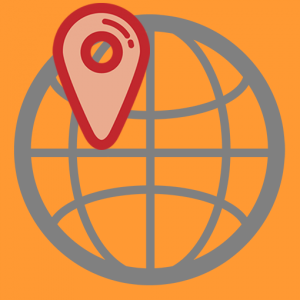Multilingual websites are a common practice among small businesses, especially if they wish to open up to new markets. The translation of your website content is fundamental, but it is just the first step.
You have translated your website to reach the right audience; however, the geographic locations of your visitors matter more than what you might expect.
 Multilingual SEO and multiregional SEO
Multilingual SEO and multiregional SEO
People visit your website from across the world and they have different cultural expectations.
In order to meet their expectations, you need to optimize your website by providing your content in different languages (multilingual SEO), and tailor it specifically to target certain geographic regions (multiregional SEO).
Multilingual SEO and multiregional SEO often overlap with each other. To define your SEO strategy, you should ask yourself:
- Which geographical regions do I want to target?
- Which language do I need to use to reach users in those regions?
What is geo-targeting?
Once you have defined your geographical areas of interest, you want visitors to receive the most relevant content, which are “geo-specific” to their location. The content can be in any form (text, images, banners, videos, etc.) and may be related to a specific locality, which can be a country, a city, or even a ZIP code.
Geo-targeting is the practice of delivering content to your visitors based on their geographic location. The geographic location can be determined through the visitor’s IP address, WiFi data, or GPS signals.
Geo-specific content helps you acquire local customers, even on your global website.
Geo-targeting resources for your website
First, it is important to understand where your traffic comes from.
Google Analytics is a great starting point. It can tell you where a visitor is located based on the person’s IP address. Google Analytics is useful for knowing where your traffic comes from, but it does not help you direct your visitors to geo-specific contents.
If you have a WordPress website, there are plugins that can make geo-targeting easier. WordPress Geo-targeting plugin (by TimerSys) and Geolify (by SaaS) are two good options. This Geo-targeting Primer offers an overview of the WordPress geo-targeting plugins and their functions.
Google geo-targeting factors
In order to improve the quality of the search results, Google takes into consideration the following elements to determine the geo-targeting of a website 1:
- Country-code top-level domain names (ccTLDs): These are tied to a specific country, and therefore are a reliable indicator that the site is intended for a certain country.
- Server location (through the IP address of the server): The server location is often physically near your users and can be an indicator of your site’s intended audience. However, it is not a definitive indicator because some websites use distributed content delivery networks (CDNs) or are hosted in a country with better webserver infrastructure.
- Other signals: Other sources of clues as to the intended audience of your site can include local addresses and phone numbers on the pages, the use of local language and currency, and links from other local sites.
URL structures
Because it is difficult to determine geo-targeting on a page-by-page basis, consider using a URL structure that makes it easy for parts of your site to geo-target different regions. Here are some of the possible URL structures with their pros and cons, as suggested by Google 2:
| URL structure | Example | Pros | Cons |
| Country-specific | example.ie |
● Clear geotargeting ● Server location irrelevant ● Easy separation of sites |
● Expensive (can have limited availability) ● Requires more infrastructure ●Strict ccTLD requirements (sometimes) |
| Subdomains with gTLDS | de.example.com |
● Easy to set up ● Can use Search Console geotargeting ● Allows different server locations ● Easy separation of sites |
● Users might not recognize geotargeting from the URL alone (is “de” the language or country?) |
| Subdirectories with gTLDs | example.com/de/ |
● Easy to set up ● Can use Search Console geotargeting ● Low maintenance (same host) |
● Users might not recognize geotargeting from the URL alone ● Single server location ● Separation of sites harder |
| URL parameters | site.com?loc=de | ● Not recommended |
● URL-based segmentation difficult ● Users might not recognize geotargeting from the URL alone ● Geotargeting in Search Console is not possible |
| Source: https://support.google.com/webmasters/answer/182192?hl=en | |||
Do you already have a global website that targets multiple regions? Geo-targeting is not an exact science, but with these technical tips and professional translation services, you are sure to reach your desired audience.
1. https://support.google.com/webmasters/answer/182192?hl=en
2. https://webmasters.googleblog.com/2010/03/working-with-multi-regional-websites.html
ICanLocalize is a leading translation service provider that works with the best native professional translators and offers translations in more than 45 languages. We are experts at localizing mobile apps (including iOS and Android ones), websites and software. You are welcome to write to us at hello@icanlocalize.com, on Skype (icanlocalize) or filling out the form below. We will be happy to answer you! We are also on Facebook, Twitter and LinkedIn!

thank you for good article.